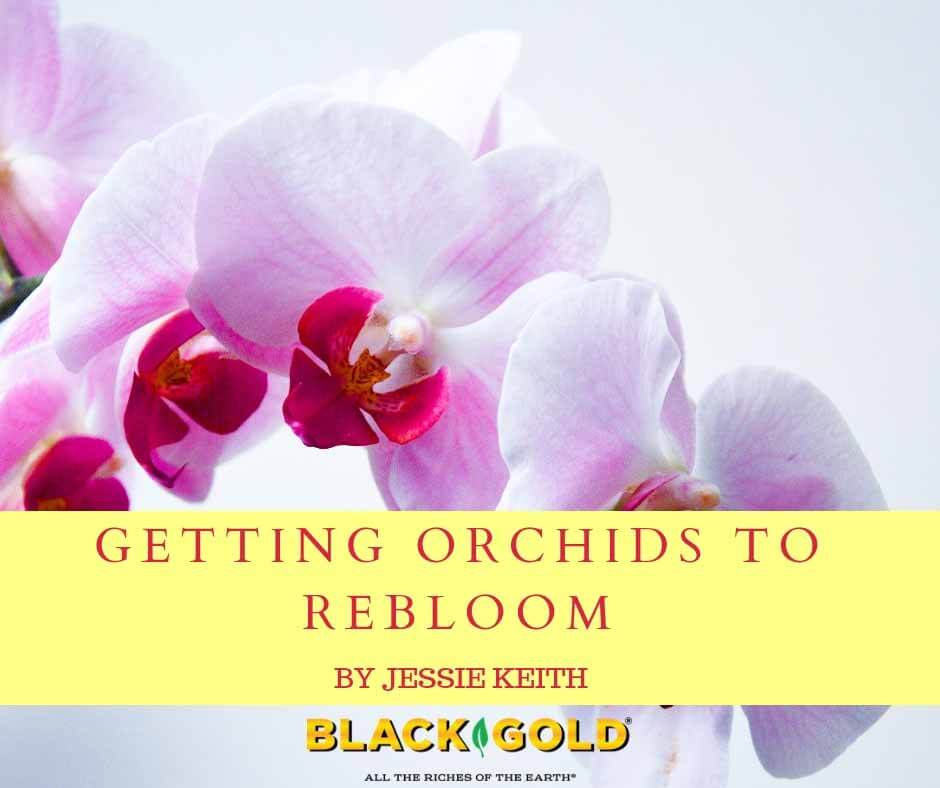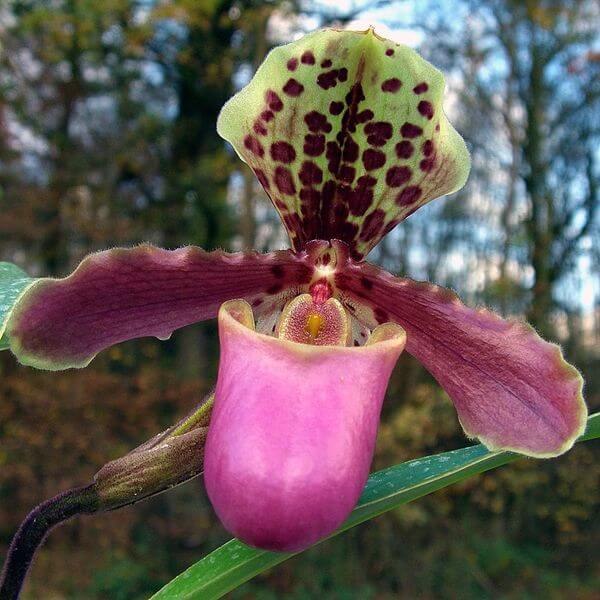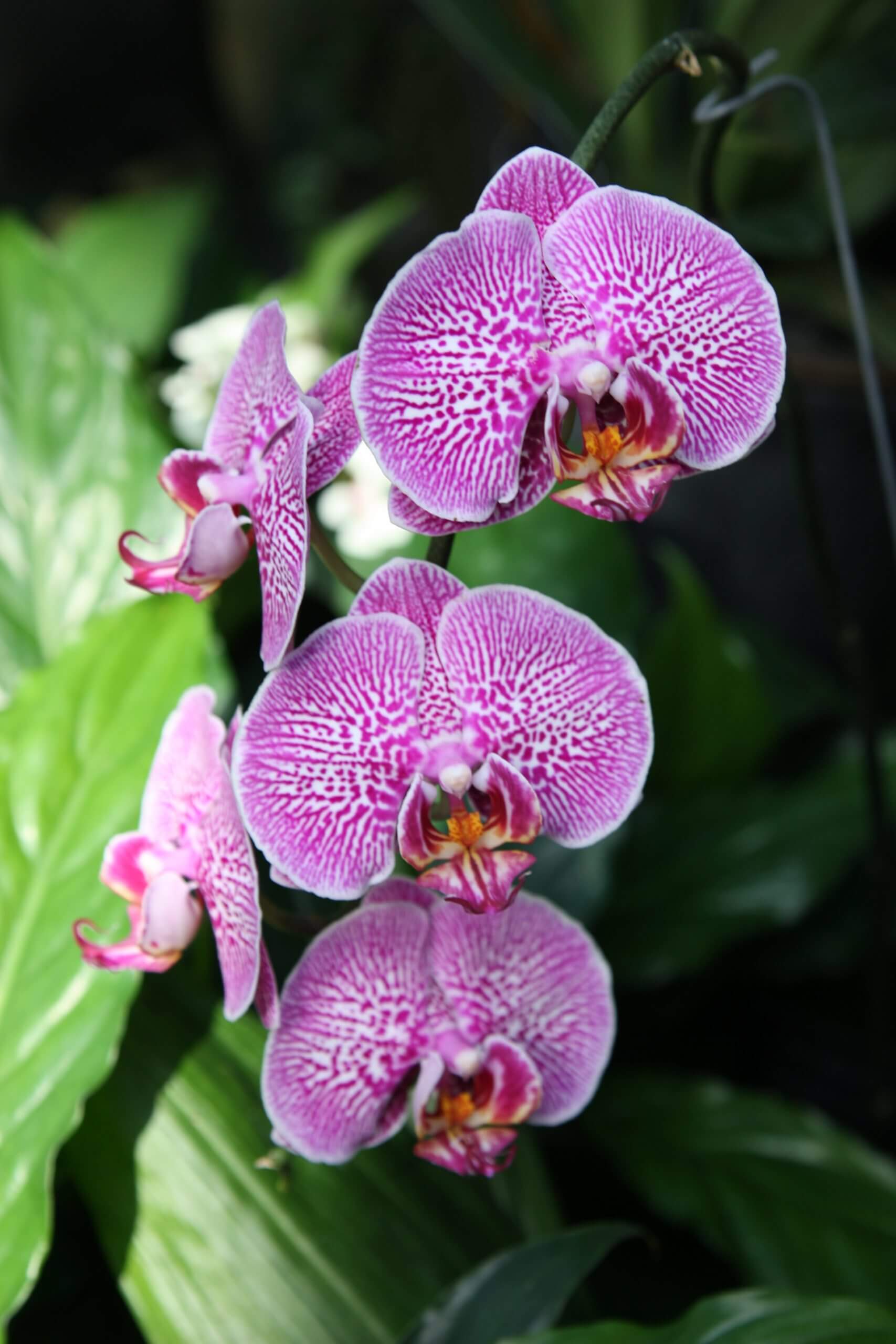
It’s a common story. You are given an orchid as a gift. It blooms beautifully for a month or so, and then it stops, never to bloom again. You may be tempted to throw it away, but don’t. It may seem like a challenge, but getting your orchids to rebloom is not as difficult as it seems.
Most cultivated orchids purchased at the store represent three common genera popular with beginners: Cattleya (corsage orchids), Paphiopedilum (slipper orchids), and Phalaenopsis (moth orchids). Orchid bloom habits depend on the type of orchid, but most of these easier-to-grow types bloom yearly, with good, balanced care. The key is getting all factors right—light, moisture, fertilizer, temperature and potting mix.
Cattleya

Cattleya bloom yearly producing some of the largest orchid flowers of all, and like most orchids, the flowers can persist for weeks when in bloom. In the wild, these tropical or subtropical plants are adapted to grow on trees where their thick roots cling to trunks. Because rain is not always plentiful, they have bulbous leaf sheaths (pseudobulbs) that hold water. When full they are plump and round, and as they lose water they deflate and wrinkle.
The trick to getting Cattleya to bloom is consistent good care. In the home, they grow best when planted in a bark medium and placed in areas with bright, indirect light and warm air with 40% to 70% humidity. Bright filtered light is recommended for best growth—happy plants should have medium green leaves. Planting in a porous, well-drained pot filled with coarse bark, such as medium-sized orchid bark, is recommended. The leaves of healthy plants should be solid medium green.
Too much or too little water can cause dire problems, so plan to irrigate plants once weekly by drenching the bark medium fully, then allowing it to drain. Many recommend watering in the morning to allow plant leaves to dry out during the day. These are very light feeders, so feeding with a balanced fertilizer formulated for orchids is recommended only once every one or two years. If one or more of these factors is not met, your Cattleya won’t flower. Potting should be done every three to four years for plants to thrive and bloom to their fullest.
Paphiopedilum

Unlike Cattleya, these tropical slipper orchids are semi-terrestrial, meaning they can grow on trees or in highly organic soils at the base of trees in the jungle environments where they originate. They thrive in warm temperatures, filtered light, and require soil that is moist yet highly organic and well drained, such as Black Gold Orchid Mix, which works beautifully for semi-terrestrial orchids. Blooming occurs once yearly, but flowers can last for one to two months. For best performance repot plants every two to three years in fresh medium. Happy plants have leaves that are rich green–many selections are mottled with dark spots. If leaves develop reddish hues, they are getting too much light.
As with Cattleya, flowering is encouraged by good care, but regular, a light feeding with a balanced fertilizer formulated for orchids is also appreciated by Paphiopedilum, in addition to even, light moisture at the root zone. If plants still refrain from blooming, try giving them a little more light. Though they are considered “low light” orchids, a boost of bright, completely filtered light may do the trick to encourage flowering. A slight drop in nighttime temperature may also kick start flowering.
Phalaenopsis

The most common orchids sold in commerce by far are moth orchid, so it should come as no surprise that they are also some of the easiest to encourage to flower. Even better, their flowers can last for months, providing continuous color for your home. Like Cattleya, these tropical orchids naturally grow in trees, so they grow best in a porous bark medium.
Low to medium filtered light is required for good blooming and growth. Olive green leaves are what you should see in a healthy Phalaenopsis. If the leaves develop a red tint, move them to a place with lower light. Weekly fertilization with a very light concentration of a balanced fertilizer formulated for orchids will also encourage good growth and heavy flowering at bloom time. A combination of good airflow and high humidity is also recommended. Repot plants every three years or when roots become too crowded for the pot.
Cutting Back Old Flowers
Old, spent orchid flower stems often persist on plants. To make way for even bigger flowers in years to come, cut back old stems to the base of the leaves. If the stem/s are still green, prune off the spent flowers to about 1-inch above the closest node on the flowering stem; this may encourage further flowering. If your spike/spikes are beginning to turn brown, prune them all the way back to the base of the plant. Always use clean, sharp shears to prune off old stems, and sterilize the shears in a 10% bleach solution before pruning another orchid. This will reduce the risk of cross-contamination if one of your orchids happens to have a disease.
Maintaining orchids that flower yearly is not as daunting as it seems. With average, consistent care, a happy indoor orchid should bloom again and again. And if you run into trouble along the way, be sure to ask an expert. The American Orchid Society offers lots of free educational materials and expert advice.
